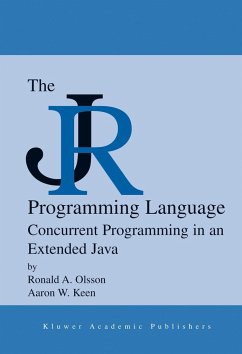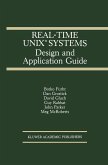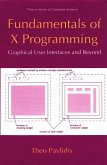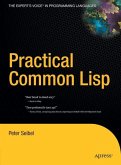JR is an extension of the Java programming language with additional concurrency mechanisms based on those in the SR (Synchronizing Resources) programming language. The JR implementation executes on UNIX-based systems (Linux, Mac OS X, and Solaris) and Windows-based systems. It is available free from the JR webpage. This book describes the JR programming language and illustrates how it can be used to write concurrent programs for a variety of applications. This text presents numerous small and large example programs. The source code for all programming examples and the given parts of all programming exercises are available on the JR webpage. Dr. Ronald A. Olsson and Dr. Aaron W. Keen, the authors of this text, are the designers and implementors of JR.
JR is a language for concurrent programming. It is an imperative language that provides explicit mechanisms for concurrency, communication, and s- chronization. JR is an extension of the Java programming language with - ditional concurrency mechanisms based on those in the SR (Synchronizing Resources) programming language. It is suitable for writing programs for both shared- and distributed-memory applications and machines; it is, of course, also suitable for writing sequential programs. JR can be used in applications such as parallel computation, distributed systems, simulation, and many others. JR supports many "features" useful for concurrent programming. However, our goals have always been keeping the language simple and easy to learn and use. We have achieved these goals by integrating common notions, both sequ- tial and concurrent, into a few powerful mechanisms. We have implemented these mechanisms as part of a complete language to determine their feasibility and cost, to gain hands-on experience, and to provide a tool that can be used for research and teaching. The introduction to Chapter 1 expands on how JR has realized our design goals.
Hinweis: Dieser Artikel kann nur an eine deutsche Lieferadresse ausgeliefert werden.
JR is a language for concurrent programming. It is an imperative language that provides explicit mechanisms for concurrency, communication, and s- chronization. JR is an extension of the Java programming language with - ditional concurrency mechanisms based on those in the SR (Synchronizing Resources) programming language. It is suitable for writing programs for both shared- and distributed-memory applications and machines; it is, of course, also suitable for writing sequential programs. JR can be used in applications such as parallel computation, distributed systems, simulation, and many others. JR supports many "features" useful for concurrent programming. However, our goals have always been keeping the language simple and easy to learn and use. We have achieved these goals by integrating common notions, both sequ- tial and concurrent, into a few powerful mechanisms. We have implemented these mechanisms as part of a complete language to determine their feasibility and cost, to gain hands-on experience, and to provide a tool that can be used for research and teaching. The introduction to Chapter 1 expands on how JR has realized our design goals.
Hinweis: Dieser Artikel kann nur an eine deutsche Lieferadresse ausgeliefert werden.








